Meet the GSD Class of 2022 Commencement Marshals
Each year, graduating students from the Harvard Graduate School of Design come together to nominate and elect classmates to serve as commencement marshals by program. Being selected as a commencement marshal is one of Harvard’s most beloved traditions and is a high honor for a graduating student. During commencement exercises, marshals help to organize the GSD procession to Harvard Yard. After Commencement, the marshals become the alumni liaisons for their class cohorts.
Meet the graduates who will represent their program at the GSD’s 2022 Commencement:
Architecture: Stephanie Lloyd

Born and raised in Fremont, California, Stephanie received her B.A. in Architecture with distinction from UC Berkeley, where she received the Eisner Prize for Architecture as well as the university’s prestigious Leadership Award. During her time at the GSD, Stephanie worked as a designer and a researcher for multiple practices, including studioPM and MILLIØNS . She was a contributing editor of the upcoming Pairs 03, a student-led journal dedicated to conversations about design, and she served as both the President and the Academic Chair of GSD Student Forum. As a first-generation student, Stephanie is deeply committed to extending design education and discourse to a broader audience, and has accepted a position as a Design Instructor for the upcoming Design Discovery and Design Discovery Virtual programs. Stephanie is graduating from the GSD with a Master’s in Architecture as the 2021-2022 Gregory S. Baldwin Fellow.
Landscape Architecture: Jacob Cascio
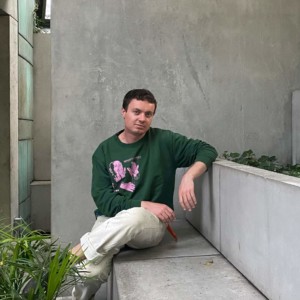
Originally from San Anselmo, California, Jacob lived for a time in Portland, Oregon, where he studied History as an undergraduate at Reed College. While at Harvard, Jacob worked as a tutor with Academic Writing Services, a free service available to all GSD students through Frances Loeb Library. In 2021, a piece he wrote on the National AIDS Memorial Grove in San Francisco won second place in The Avery Review Essay Prize. In his free time, Jacob prefers to sit at a small garden table in partial shade, with a glass of sparkling water and half a lemon. He is so honored to represent the 2022 cohort of graduating MLA students!
Urban Design: Naksha Satish

A native of Bangalore, India, Naksha studied at the School of Architecture, CEPT University and pursued an urban fellowship at the Indian Institute for Human Settlements (IIHS) before enrolling at the GSD. Her professional interests lie at the intersection of technology, housing, and sustainable design of cities. While at Harvard, Naksha held a variety of leadership roles, including serving as an India Design Leadership Fellow, GSD representative of the Harvard External Advocacy Council, Professional Development Chair of GSD Student Forum, the Urban Design Department’s UD:ID Conversations Lead, and Curator of the GSD Alumni Council’s Design Impact South Asia Panel. Outside of school, Naksha enjoys discovering new places, charcoal sketching, and writing. She believes in collective learning and standing for the rights women are entitled to as practitioners, across the globe.
Urban Planning: Miguel Perez-Luna
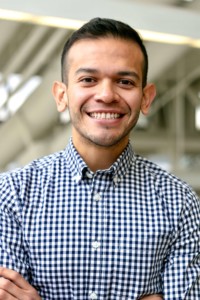
Miguel grew up in Greeley, CO, and received his undergraduate degree from Harvard College with a major in psychology. After his undergraduate program, he completed a Fulbright Fellowship in Italy before returning to teach high school math in Cambridge, MA. His experience growing up in an immigrant family and his work with students and families inspired him to pursue urban planning. While at the GSD, Miguel explored how cities can design more equitable community engagement processes, accessible transportation systems, and inclusive public spaces. Outside of class, he served on the leadership teams of Latin GSD and Queers in Design, and in the summer of 2021 he interned as a policy analyst for the Volpe National Transportation Systems Center. In his free time, he enjoys running, cooking, eating, and traveling.
Design Studies: Shane Ah-Siong
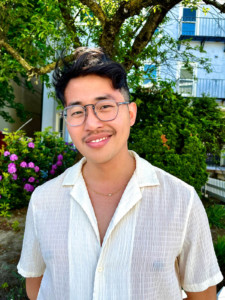
Shane is a design researcher from Mauritius. Trained in architecture, his academic and activist enquiries lie at the intersection of spatial politics and the built form. As an undergraduate at the University of Florida, Shane co-founded the Coalition in Design, which commits to advancing goals of racial equity and decolonial architectural teachings within the School of Architecture. At Harvard, he was co-curator of Kirkland Gallery, and worked with Harvard Innovation Labs and the Radcliffe Institute. Shane also served as a Teaching Fellow in the department of Theatre, Dance and Media. His thesis aims to spatialize colonial memory and decenter dominant racial historiographies in Mauritius and the Chagos Archipelagos. Outside of the classroom, Shane can be found engaging in the dramatic arts, designing clothing with his brother, swimming, and painting.
Design Engineering: Doria Spiegel
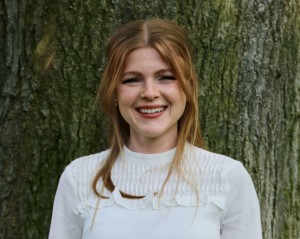
Doria Spiegel was born in Forchheim, Germany, and grew up primarily in the western suburbs of Chicago. She received a B.A. in physics and math from St. Olaf College in Minnesota, after which she served over two years in the US Peace Corps as a STEM Education Development Agent near Atebubu, Ghana. During her time in Harvard’s Masters in Design Engineering program, her areas of focus included educational game development, fabrication and robotics, data science, astrophysics, and quantum chaos. She also acted as an MDE ’22 Class Representative and worked as a Teaching Fellow for a graduate-level SEAS course and Teaching Assistant through GSD. In her free time, Doria loves to build things, play with her two dogs, harmonize to any song and spend as much time as possible outdoors.
Doctor of Design: Mojdeh Mahdavi

Originally from Tehran, Iran, Mojdeh received a Bachelor of Architectural Design and a Master of Landscape Architecture at the University of Tehran, and a Post-Master in Urban Studies at École Nationale Supérieure d’Architecture Paris LaVillette, ENSAPLV. She then practiced urban and architectural design in Paris, Tehran, and Almaty in well-established firms and experimental design groups, before deciding to pursue her Doctor of Design at Harvard. Mojdeh’s doctoral project investigated how digital transformation and smart city technologies change the policymaking context, institutions of urban governance, and the city. Her broader research engages with the evolving relationships between urbanization, urban governance and politics, and digital technology. While at the GSD, Mojdeh was actively involved with Harvard Bloomberg City Leadership Initiative , Berkman Klein Center for Internet & Society , Urban Theory Lab , and New Geographies. She co-edited the twelfth volume, New Geographies 12: Commons. Mojdeh enjoys drawing, reading, gardening, and weight-lifting in her free time.
The GSD joins High Line Network and Urban Institute to launch the Community First Toolkit, a guide for expanding equity in public spaces

The High Line Network , a program of the High Line that supports a group of nonprofit organizations transforming underutilized infrastructure into new urban landscapes, recently announced the launch of its Community First Toolkit . Developed by the High Line Network in partnership with the Harvard Graduate School of Design (Harvard GSD) and the Urban Institute , the Community First Toolkit is an equity-based action planning resource for practitioners in the field of infrastructure reuse, as well as city officials, urban planners, nonprofit leaders, and other community members.
Stephen Gray, Associate Professor of Urban Design and Caroline Filice Smith, a PhD candidate and former Irving Fellow, both participated in the development of the Toolkit.
“Race is treated more as an area of specialization than the endemic cornerstone of society and space that it is,” said Stephen Gray. “The Community First Toolkit is designed to help cities and civil society organizations contextualize their projects within legacies of racialized policy and practice—illuminating the complicated relationship between systemic racism and the production of space—and equip them to tackle impediments to community resilience.”
The Community First Toolkit aims to address inequities caused by historic and persistent infrastructural racism by putting community first in design, budgeting, and all phases of park planning. Fifteen Network members collaborated with research partners over two years to build a new, practitioner-based process and set of tools to do this work. The resulting Community First Toolkit is designed to help park organizations address inequities caused by infrastructural racism, and shape public spaces that bring social, environmental, and economic benefits to communities.
For more information about the Community First Toolkit, view the Embedding Equity in Public Space: The Community First Toolkit Launch, held on May 18, 2022.
Harvard GSD announces Master in Real Estate degree
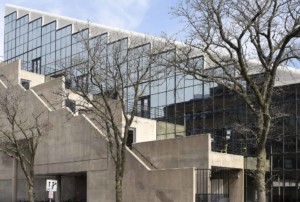
The Harvard Graduate School of Design (GSD) is pleased to announce a new 12-month degree, the Master in Real Estate (MRE), for individuals seeking to acquire core real estate skills while learning how real estate can advance beneficial spatial, social, and environmental outcomes in cities and metropolitan areas worldwide. The school has received a combined $13M in gifts from GSD alumni and friends. The program will accept applications in fall 2022 for up to 25 spaces, with the first class enrolling in fall 2023.
“As our cities, their communities, and the environment face mounting crises, the world needs a new kind of developer, and with this degree the GSD aims to educate leaders in real estate who are prepared to face such complex and urgent ethical challenges,” said Sarah M. Whiting, Dean and Josep Lluís Sert Professor of Architecture.
The MRE program is designed to train future practitioners to address new and urgent realities facing the built environment and cities today. Whether undertaken by for-profit businesses, not-for-profit organizations, or public entities, real estate occupies a pivotal role in determining how the places where we live, work, and play are equitable, environmentally sustainable, and appealing, in addition to being productive for the economy. On top of today’s routine pressures of making real estate projects successful are the effects of climate change, the need for equitable development, shifting boundaries between home and work, online consumerism, and global flows of capital. Today, real estate investors are applying environmental, social, and governance criteria (often referred to as ESG criteria) as new metrics for performance, and regulatory agencies are requiring developers to demonstrate that their projects account for environmental factors. Providing public benefits such as affordable housing is also becoming a common requirement of local development approval.
Jerold S. Kayden, the Frank Backus Williams Professor of Urban Planning and Design and Founding Director of the MRE program, sees the MRE degree as “transformational in its recognition that future success in real estate will depend not only on traditional financial and management skills but on a profound understanding of and responsiveness to the new dynamics of social and environmental conditions.”
Through a cross-disciplinary pedagogy of required and elective courses, concluding with a two-month practicum based at a private or public real estate organization working on a socially and environmentally oriented project, students learn about finance, project and construction management, government regulation, urban economics, public-private partnerships, politics, technology, real estate law, ethics, entrepreneurship, negotiation, leadership, and other subjects essential to the practice of present and future real estate.
“In establishing the Master in Real Estate program as part of the Department of Urban Planning and Design, the GSD recognizes real estate as a critical domain in the production of the built environment spanning many concerns,” said Rahul Mehrotra, Chair of the Department of Urban Planning and Design and John T. Dunlop Professor in Housing and Urbanization. “The program will educate new generations of real estate entrepreneurs who will imagine new possibilities for healthy synergies between property development, government regulation, and social imperatives, all while safeguarding the health of our planet.”
Students enrolled in the MRE program will benefit from being part of one of the largest design schools in the world, with close to 200 faculty members and 900 graduate students, of whom more than fifty percent hail from countries outside the United States. Offering the MRE degree within the GSD’s Department of Urban Planning and Design builds upon its longstanding strengths in real estate education and research and reflects the Department’s intentional synthesis of planning, policy, and design. With nearly a century of experience in studio-based education, the GSD is ideally positioned to tailor instruction to emphasize the holistic and collaborative environment in which real estate projects are successfully launched. The MRE program also benefits from programs and courses offered by Harvard’s 11 other schools, including the schools of business, government, law, public health, and engineering and applied sciences, as well as the Faculty of Arts and Sciences.
In addition, the Joint Center for Housing Studie s (overseen by the GSD and the Harvard Kennedy School ) as well as the GSD’s Center for Green Buildings and Cities offer an important resource to MRE students. Both centers sponsor applied research and organize public programs and other engagements with private industry and the public sector.
Harvard Graduate School of Design shortlists four architects for 2022 Wheelwright Prize
Harvard Graduate School of Design (Harvard GSD) has announced four shortlisted architects for the 2022 Wheelwright Prize. Now in its 10th cycle, the Wheelwright Prize supports innovative design research, crossing both cultural and architectural boundaries, with a $100,000 grant intended to support two years of study. Previous winners have presented diverse research proposals, including studies of kitchen typologies around the world; the architecture and culture of greenhouses; the potential of seaweed, shellfish, and the intertidal zone to advance architectural knowledge and material futures; and how spaces have been transformed through the material contributions of the African Diaspora. The 2022 Wheelwright Prize drew a wide international pool of applicants. A first-phase jury deliberation was conducted in April; a winner will be announced in June. Jurors for the 2022 prize include: Will Hunter, 2022 Harvard GSD Loeb Fellow and founder and chief executive of London School of Architecture; Adrian Lahoud, dean of the School of Architecture at the Royal College of Art; Mark Lee, chair of the Department of Architecture at the Harvard GSD; Irene Sunwoo, John H. Bryan Chair and Curator, Architecture and Design at the Art Institute of Chicago; Shirley Surya, curator of design and architecture at M+; and Sarah M. Whiting, dean and Josep Lluís Sert Professor of Architecture at the Harvard GSD.The four finalists for the 2022 Wheelwright Prize, and their proposals, are:
Curry J. Hackett: “Drylongso: Sociospatial Tropes of the African Diaspora”
Curry J. Hackett is a lecturer and adjunct assistant professor at the School of Architecture at the University of Tennessee, Knoxville, and core organizer of the anti-racist design justice school, Dark Matter University. His practice, Wayside Studio, primarily based in Washington, DC, collaborates with communities and organizations to engage in matters pertaining to culture, infrastructure, ecology, and the public realm. Hackett earned a BArch from Howard University in 2013. Noteworthy work includes Howard Theatre Walk of Fame, Swept Yard, King Park, the DC High Water Mark system, and DC Clean Rivers Project. Through his research, Hackett explores the relationships between Blackness and land, particularly in the culturally hybridized region of the American Atlantic and Gulf Coasts. Borrowing the Black term “Drylongso,” meaning “ordinary” or “same old,” Hackett calls for the architecture discipline to advance a more ethnographic mode of practice which celebrates informality and honors institutional memory. Hackett’s “Drylongso: Sociospatial Tropes of the African Diaspora” proposal involves a critical study of diasporically linked regions, including South Carolina, Trinidad and Tobago, and Senegal, to shed light on transatlantic vernacular. With his 2021 solo exhibition, Drylongso: An Ode to the Southern Black Landscape, displayed at the Twelve gallery located at Union Street Market in Washington, DC, Curry brought forth a personal testament of family, identity, and place, and documents his family’s experience growing up on generational farmland in Prospect, Virginia. Hackett’s Wheelwright Prize proposal stems from his solo exhibition and would provide future resources to investigate other Black sociospatial tropes that continue to be excluded by the traditional canons in the disciplines of architecture and landscape design. Hackett proposes travel to diasporically related regions in Mexico and Central America, the Caribbean, and West Africa that would yield a multimedia representation of customary relationships with these lands, including a suite of drawings, installations, publications, archival oral histories, and a short film.Summer Islam: “Groundwork”
Summer Islam is an ARB registered architect, researcher, and activist who works at the intersection of architectural design, engineering, systems thinking, digital technologies, and material science. She is a founding director of Material Cultures, a nonprofit organization that brings together design, research, and action toward a post-carbon built environment. She has taught at University of the Arts London, University College London, London Metropolitan University, the Architectural Association, and the University of Cambridge. Islam earned her BArch from the Middle East Technical University, Ankara (2008), and RIBA part 1 (2011) and RIBA part 2 (2014) from the Architectural Association School of Architecture, London. With “Groundwork,” Islam explores how different industrial, social, cultural, and economic pressures interrelate with the land, while examining the potential new role of the architect in reconciling these demands, specifically in the complex interdependencies that exist in Britain. Given the immediate challenges of climate change, the global housing crisis, and the toxic and destructive results of fossil-fueled industries and raw material extraction, Islam aims to unite and educate stakeholders in efforts to persuade a new generation of architects, developers, planners, and citizens to reconsider how new methods of construction material are designed and produced. The proposal assigns resources for research, publications, consultancy, and advocacy—all in efforts to recalibrate a new model of regenerative land management across the UK and advise on the most ecologically advanced and sustainable practices for design policy, the construction industry, and agriculture. Work site visits to innovative agroforestry and agriculture practices are a critical part of her proposal, including locations in Britain, Spain, France, and Italy. The “Groundwork” proposal also allocates funds for mapping ecosystems and morphologies, public programming, and a list of sustainable materials to be shared widely as a research depository.Marina Otero: “Future Storage: Architectures to Host the Metaverse”
Marina Otero is head of the social design masters at Design Academy Eindhoven. The program focuses on roles for designers attuned to contemporary ecological and social challenges. From 2015 to 2022, she was the director of research at Het Nieuwe Instituut (HNI), the Dutch Institute for Architecture, Design and Digital Culture. At HNI, she led initiatives focused on labor, extraction, and mental health from an architectural and post-anthropocentric perspective, including “Automated Landscapes,” “BURN-OUT: Exhaustion on a Planetary Scale,” and “Lithium.” Otero received an MS in critical, curatorial and conceptual practices in architecture from Columbia University’s Graduate School of Architecture, Planning and Preservation in 2013 and completed her PhD at Escuela Técnica Superior de Arquitectura de Madrid in 2016. She is a co-editor of Unmanned: Architecture and Security Series (2016), After Belonging: The Objects, Spaces, and Territories of the Ways We Stay In Transit (2016), Architecture of Appropriation (2019), and More-than-Human (2020); and editor of Work, Body, Leisure (2018). With “Future Storage: Architectures to Host the Metaverse,” Otero examines new architecture paradigms for storing data and how reimagining digital infrastructures could meet the unprecedented demands facing the world today−questioning the functionality, efficiency, and sustainability of the colossal data storage centers and facilities managed across the globe. This research explores innovations in data storing architectures attuned to social and ecological challenges, land availability, the growing cost of energy, and changing data. The research proposal analyzes historical and contemporary cases and engages with experts, local communities, and ecosystems. Otero has already conducted fieldwork in France, the Netherlands, and the UK. The Wheelwright Prize would expand research visits to include Singapore, Australia, Nigeria, California, Iceland, Sweden, and Chile. The fieldwork, data collection, and prototype development, among additional research, will all result in the first manual for global data center architecture design containing examples of ecological, circular, and egalitarian data storage models. This manual will ultimately inform an open-source design course syllabus and a series of public programs bringing designers and service providers together.Feifei Zhou: “Between Land and Water: Architecture of Porosity”
Feifei Zhou is a Chinese-born artist and architect who works between China and London. She holds a BArch from the University of Sheffield, UK (2014) and an MArch from Royal College of Art in London (2018). Her work explores spatial, cultural, and ecological impacts of the industrialized built environment. She co-edited the digital publication Feral Atlas: The More-than-Human Anthropocene (2020). Zhou is currently an associate lecturer at Central Saint Martins, University of the Arts London. With “Between Land and Water,” Zhou investigates the future of coastal architecture, specifically architecture that allows porosity at the land-water interface, and its potential in combating coastal natural disasters and participating in human and nonhuman livelihoods. Zhou’s research brings her to Southeast Asia’s coastlines where rapid urbanization is only compounded by the social and ecological tensions in the region. This proposal also takes a critical look at social and ecological tensions of the simultaneous decline of Southeast Asia’s small-scale farming and the vernacular stilt houses, as well as the growing dependence on large-scale infrastructures. “Between Land and Water” aims to combine academic research with local-based practice and explore the potential of architecture as the contemporary answer of coastal environmental challenges through allowing more-than-human cohabitation. For the Wheelwright Prize, Zhou plans to create and produce visual essays that will be exhibited together as a series, accompanied by other produced work such as photographs, publications, and material studies. Zhou proposes that each visual essay represents site-specific social and environmental complexities facing Southeast Asia, but that together they will offer a matrix of connections and comparisons of interregional coastal built environments.Eve Blau among the newly elected members of the American Academy of Arts & Sciences
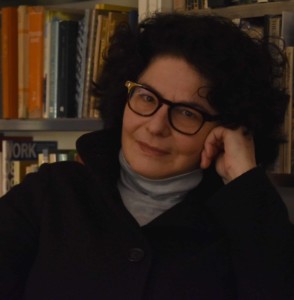
Eve Blau
Inventing Greenland by Bert De Jonghe Examines the Urban Transformation of an Arctic Nation
 A new book by doctor of design candidate Bert De Jonghe (MDes ’21), Inventing Greenland: Designing an Arctic Nation (Actar, 2022), examines the intense transformation of Greenland through the lens of urbanization. The book is based on De Jonghe’s MDes thesis at the Harvard Graduate School of Design, which was advised by Professor of Landscape Architecture Charles Waldheim, who also wrote the book’s foreword.
Inventing Greenland explores Greenland’s cultural, social, and environmental realities and recognizes an array of relationships supported and produced by the built environment. Aimed at architects, landscape designers, and urban planners, it draws attention to the island’s emerging opportunities and ongoing challenges. “By exploring Greenland as a complex and interconnected cultural and geographical space, Inventing Greenland reveals and anticipates transitional moments in the region’s highly intertwined urbanized, militarized, and touristic landscapes,” according to the publisher.
A new book by doctor of design candidate Bert De Jonghe (MDes ’21), Inventing Greenland: Designing an Arctic Nation (Actar, 2022), examines the intense transformation of Greenland through the lens of urbanization. The book is based on De Jonghe’s MDes thesis at the Harvard Graduate School of Design, which was advised by Professor of Landscape Architecture Charles Waldheim, who also wrote the book’s foreword.
Inventing Greenland explores Greenland’s cultural, social, and environmental realities and recognizes an array of relationships supported and produced by the built environment. Aimed at architects, landscape designers, and urban planners, it draws attention to the island’s emerging opportunities and ongoing challenges. “By exploring Greenland as a complex and interconnected cultural and geographical space, Inventing Greenland reveals and anticipates transitional moments in the region’s highly intertwined urbanized, militarized, and touristic landscapes,” according to the publisher.
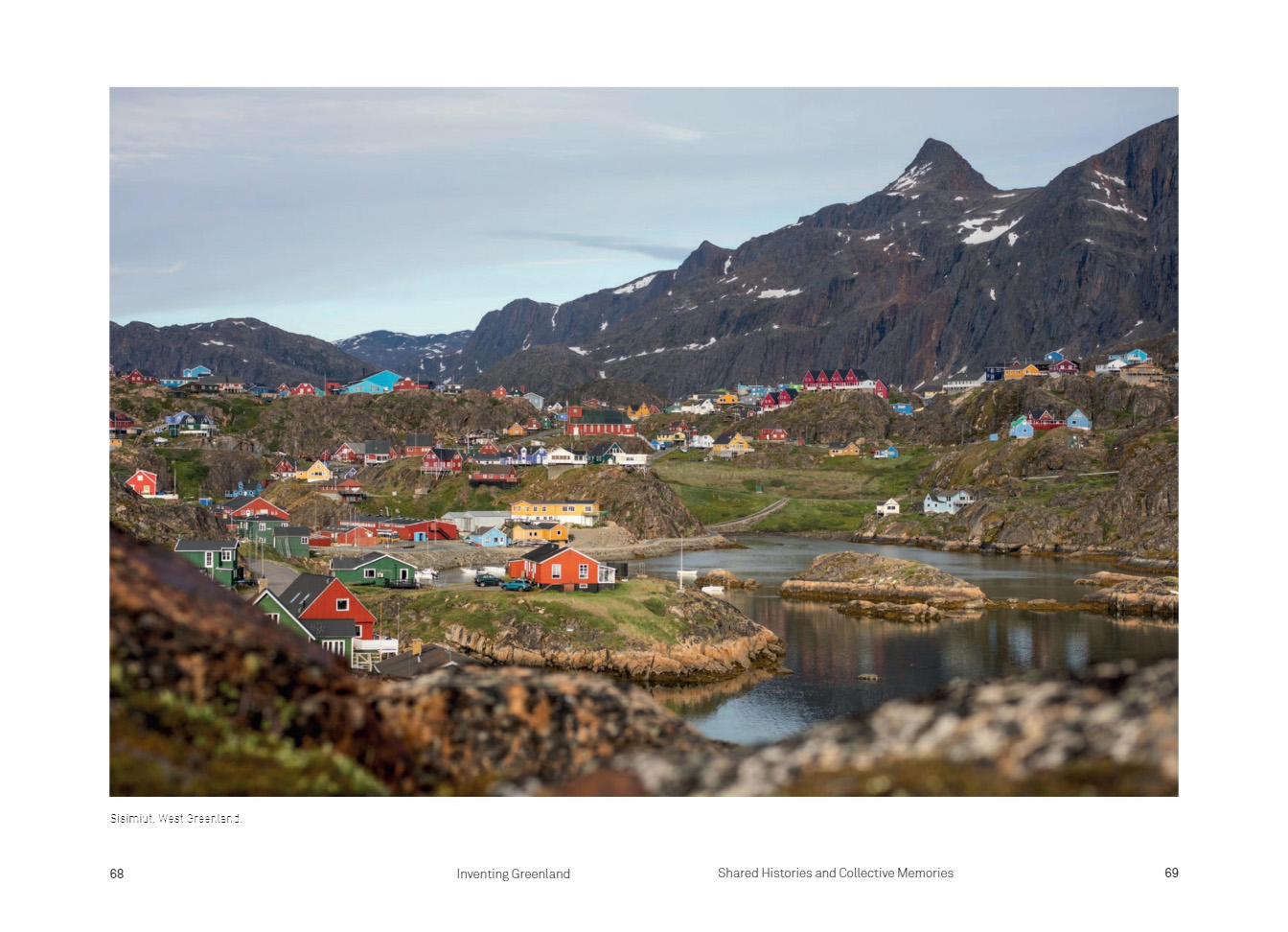 As a first-year DDes student, De Jonghe has been investigating the Arctic urbanization of Russia while drawing attention to emerging influences and ambitions of the “near-Arctic state,” China. Before studying at the GSD, De Jonghe worked as a landscape architect in Belgium, South Africa, and Norway. He is also the founder of Transpolar Studio, a spatial design practice specializing in landscape architecture, urbanism, and design research in the Arctic and subarctic regions.
As a first-year DDes student, De Jonghe has been investigating the Arctic urbanization of Russia while drawing attention to emerging influences and ambitions of the “near-Arctic state,” China. Before studying at the GSD, De Jonghe worked as a landscape architect in Belgium, South Africa, and Norway. He is also the founder of Transpolar Studio, a spatial design practice specializing in landscape architecture, urbanism, and design research in the Arctic and subarctic regions.
Sharon Johnston and Mark Lee among American Academy of Arts and Letters 2022 Architecture Award winners
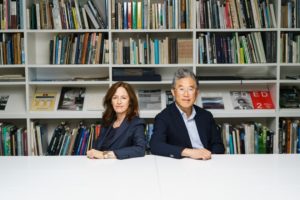
Sharon Johnston, left, and Mark Lee, founders of the L.A. architectural firm Johnston Marklee.(Marcus Yam / Los Angeles Times)
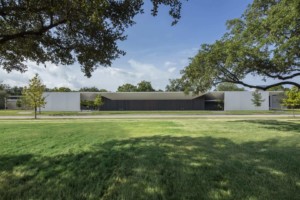
The Johnston Marklee-designed Menil Drawing Institute in Houston, a 2022 AIA Architecture Award-winning project. (Richard Barnes)
Coming Soon: Harvard Design Magazine #50: Today’s Global Edited by Sarah M. Whiting and Rahul Mehrotra
Is globalization the most powerful single force shaping the built environment today? Guest edited by Sarah M. Whiting and Rahul Mehrotra, Harvard Design Magazine 50: Today’s Global (launching in May 2022) considers the sustainability of contemporary architectural production and how design has the potential to advance a deeper and more productive discourse over globalization. Modernity has entered a phase of critical backlash against globalization, which is for some a critique of international integration, for others a critique of global and local inequalities produced by neoliberal extremism, and for many, a shared global concern over climate change. Over the past 50 years, advanced technology and the digital revolution have afforded architects and designers the ability to operate outside their own regions, customs, and cultures, at a scale and freedom that has not previously been realized. The resulting industry produces architectural commodities that increasingly dominate the built environment and promote the trend toward globalizing, consumerist cities. Globalization has not only shifted our perspective of the world, it has also transformed how architectural identity defines itself. Today’s Global enriches this dialogue and celebrates the emergence of new resources that have made broader global design talent more visible and rejects the stultifying categories—such as “first world” and “third world”—defined by contemporary boundaries. In this issue, Sarah M. Whiting and Rahul Mehrotra have invited an international group of public intellectuals, critics, scholars, and practitioners in architecture, urban planning, landscape design, and the social sciences and humanities to offer in-depth analysis of the political, social, and economic forces that have shaped global architecture and design over the past 25 years. Today’s Global features essays and conversations by distinguished contributors in their respective fields, which address the challenges and opportunities facing design thinking in a time of expanding globalization and shifting localities and regionalism. The issue concludes with a call-and-response segment, in which contributors respond to the provocative prompt: “What does it mean to be a global practitioner today?” Harvard Design Magazine is an architecture and design magazine that probes at the reaches of design and its reciprocal influence on contemporary culture and life. Published twice a year and helmed by Editorial Director Julie Cirelli at Harvard’s Graduate School of Design, Harvard Design Magazine invites guest editors to consider design through an interdisciplinary lens, resulting in unique perspectives by an international group of architects, designers, students, academics, and artists. For current and back issues, as well as subscription information and stockists, visit the Harvard Design Magazine website.Zina Fraser (MLA ’23) named a 2022 Hart Howerton Fellow
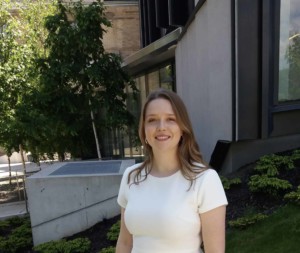
Courtesy of Zina Fraser
Katarina Richter-Lunn (MDes ’21) awarded a 2022 Paul & Daisy Soros Fellowship
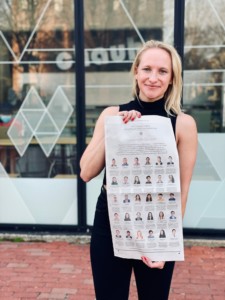
Courtesy of Katarina Richter-Lunn


